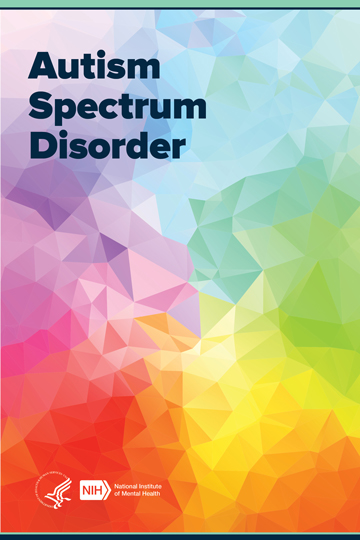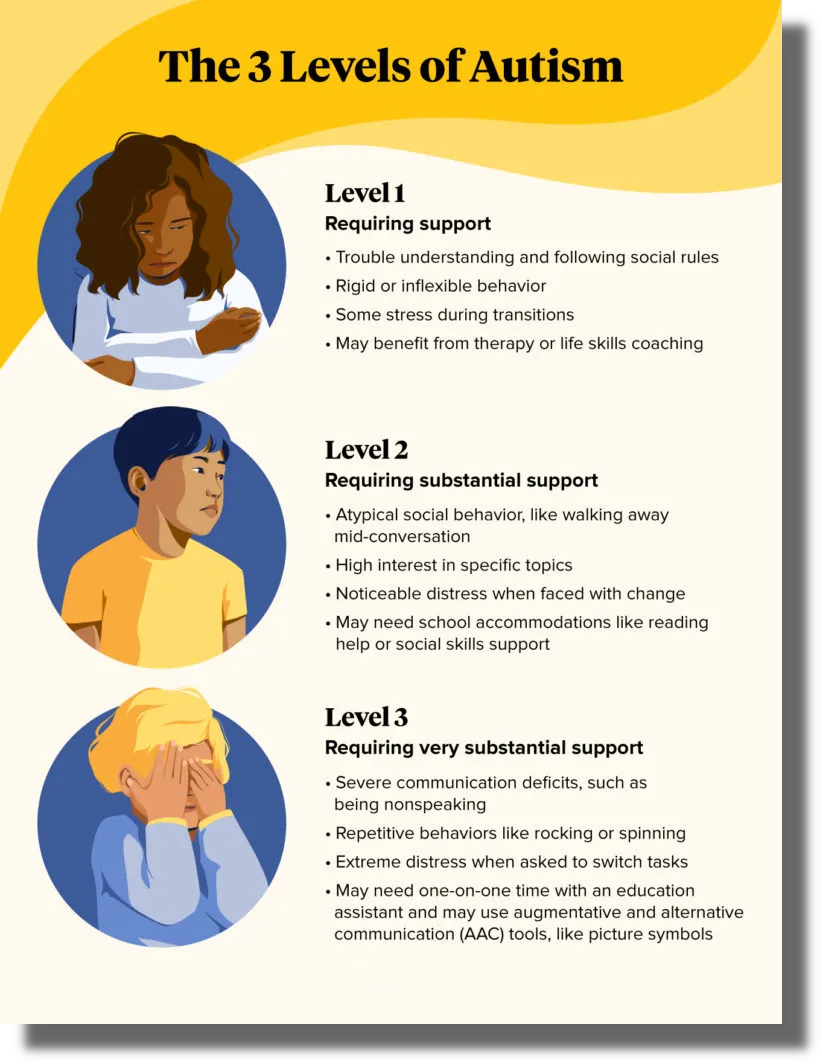Promoting Inclusivity: Exactly How to Create Supportive Environments for Those With Behavioral Autism
Developing supportive environments for individuals with behavioral autism is important for cultivating inclusivity. You may question just how recognizing vital qualities and difficulties can pave the means for effective approaches. By focusing on empathy and communication, you can make a significant impact. What details actions can you take to guarantee these individuals thrive in various setups? Let's explore the approaches that can lead to significant modification.
Understanding Behavioral Autism: Secret Attributes and Difficulties
Recognizing behavioral autism includes identifying its essential attributes and the challenges it provides. People with autism frequently display troubles in social interaction, communication, and repeated actions.

Supporting somebody with behavior autism suggests being patient and adaptable. You'll need to create an atmosphere that lessens anxiety and advertises convenience. Acquainted regimens can assist, together with clear, consistent communication. Comprehending these attributes will lead the way for a lot more effective assistance and an extra inclusive environment.
The Role of Empathy in Sustaining People With Autism
Compassion plays a crucial duty in sustaining individuals with autism by helping you understand their unique viewpoints. By exercising active listening strategies, you can construct emotional connections that cultivate trust fund and interaction - Aba Therapist Near Me. This understanding not just improves your relationship yet likewise creates an extra encouraging atmosphere for them
Recognizing Special Point Of Views
When you consider the one-of-a-kind point of views of individuals with autism, it comes to be clear how essential empathy remains in supplying effective assistance. Everyone's experience is formed by different sensory level of sensitivities, communication designs, and emotional feedbacks. By stepping right into their shoes, you can begin to understand their world. This understanding aids you respond extra thoughtfully to their demands and challenges. Identifying their strengths and has a hard time fosters a deeper link, building depend on and urging open communication. Your capacity to understand enables you to develop an environment where they really feel secure, valued, and comprehended. This encouraging atmosphere equips people with autism to express themselves, eventually boosting their well-being and growth. Empathy is not simply a skill; it's an important structure for meaningful connections.

Active Listening Techniques
Energetic listening methods play a crucial duty in sustaining people with autism, as they cultivate a much deeper link and understanding. You show that you value their sensations and thoughts when you engage in active listening. Maintain eye call, nod, and make use of spoken affirmations to indicate your attentiveness. Paraphrase what they claim to validate your understanding, and ask flexible concerns to motivate further expression. Avoid disrupting, permitting them to verbalize their points fully. Be conscious of your body movement; it must be open and welcoming. By practicing these strategies, you develop a risk-free space where individuals really feel heard and respected, ultimately boosting their interaction and emotional health. Compassion shines through when you proactively listen, strengthening your partnership with them.
Building Emotional Links
Creating a supportive setting via energetic paying attention naturally leads to building emotional connections with people on the autism spectrum. When you genuinely involve, you're not just hearing their words; you're comprehending their sensations.

Reliable Interaction Approaches for Inclusivity
Reliable interaction approaches play a crucial duty in cultivating inclusivity for people with behavioral autism. Begin by utilizing clear, easy language that's easy to understand. Stay clear of expressions or abstract expressions; they can be complicated. Instead, be direct and details regarding what you imply.
Nonverbal signs are similarly essential. Focus on your body movement, faces, and tone of voice, as these can share more than words. Maintain eye call and use motions to improve understanding.
Additionally, be patient and provide individuals time to procedure info. Encourage them to share their thoughts and sensations, showing that their input is valued.
Active listening is crucial; repeat or paraphrase what they have actually stated to verify understanding. Finally, adjust your communication methods based upon private preferences, whether it's via aesthetic aids, written directions, or other tools. This personal touch strengthens addition and assists develop meaningful connections.
Customizing Support Systems in Educational Settings
In educational settings, you'll desire to focus on Individualized Education Program (IEPs) that deal with each student's special needs. Creating a sensory-friendly classroom design can likewise improve finding out by promoting and lessening disturbances comfort. Together, these techniques can cultivate a setting where students with autism flourish.
Individualized Education And Learning Strategies
While steering through the complexities of autism in academic settings, Individualized Education and learning Program (IEPs) play a crucial role in customizing support group to fulfill each pupil's unique needs. An IEP describes particular goals, lodgings, and solutions that fit your kid's obstacles and toughness. It's essential to team up with educators, professionals, and your youngster to develop a thorough strategy. Regularly upgrading the iep and assessing assures it stays efficient as your kid grows. Encourage open interaction amongst all celebrations included, fostering a supportive network that advertises your youngster's success. Keep in mind, an efficient IEP is not get more info simply a record; it's a living device that adapts to your child's advancing demands, guaranteeing they flourish in their educational setting.
Sensory-Friendly Class Design
Producing a sensory-friendly classroom can considerably enhance the learning experience for pupils with autism. Beginning by examining your classroom's lights; soft, all-natural light can minimize overstimulation. Incorporate adaptable seating alternatives, like bean bags or floor pillows, to enable trainees to find their convenience area. Usage relaxing colors on wall surfaces and decor to produce a soothing environment. Take into consideration adding sensory corners with fidget devices, noise-cancelling headphones, or weighted blankets for pupils who need breaks. Organize rooms to minimize clutter, assisting pupils concentrate better. Lastly, develop clear regimens and signals to communicate modifications, alleviating anxiousness. By making these adjustments, you'll produce an atmosphere where pupils with autism really feel extra supported and engaged in their discovering trip.
Developing Inclusive Workplaces for People With Autism
To cultivate an absolutely comprehensive office for people with autism, employers should recognize the unique strengths and challenges these people bring. Beginning by promoting clear communication and providing detailed work summaries that detail expectations. This helps people recognize their functions much better and reduces anxiety.
Take into consideration applying versatile work setups, such as remote job or changed hours, to accommodate numerous sensory demands and personal choices. Training your staff on autism recognition is necessary; it can enhance compassion and advertise a supportive ambience.
Producing quiet rooms where employees can reenergize during stressful minutes can also make a substantial difference. Urge the use of assistive technologies that assist boost and improve jobs productivity.
Inevitably, valuing diversity will certainly not only benefit people with autism however will certainly also improve the entire group, leading to a much more vibrant and innovative work environment. Welcome these techniques to grow an environment where everybody can thrive.
Encouraging Social Interaction and Neighborhood Involvement
Motivating social interaction and community interaction is essential for people with autism, as it aids develop self-confidence and cultivates significant partnerships. To create a supportive setting, beginning by providing chances for individuals to get in touch with others in a comfy setting. Arrange group tasks that accommodate various interests, such as art classes, sports, or neighborhood solution tasks.
You can also help with smaller, structured events where every person can share their ideas and experiences. Encourage open communication by modeling respectful listening and empathy. Establishing peer mentorship programs can assist produce bonds and supply support.
Entail family members and neighborhood companies to widen the assistance network and advertise comprehensive occasions. Bear in mind, the trick is to develop secure rooms where people with autism really feel valued and recognized. By cultivating these links, you'll aid them prosper socially and create a feeling of belonging within the neighborhood.
Resources and Devices for Structure Helpful Environments
While building encouraging settings for individuals with autism may appear tough, a number of resources and tools can make the procedure much easier and much more effective. Take into consideration using visual assistances like routines or social tales to assist individuals recognize their everyday regimens and social circumstances. Applications developed for interaction, such as AAC (Alternative and augmentative Interaction) tools, can likewise enhance communication.
In addition, training programs for staff and volunteers on autism understanding can advertise empathy and understanding in your neighborhood. Check into local organizations that supply workshops or resources customized for sustaining individuals with autism.
Producing sensory-friendly rooms with relaxing elements-- like soft illumination and silent locations-- can benefit those who may come to be overloaded. Finally, establishing links with neighborhood assistance groups can offer continuous support and responses, helping you refine your method and assurance inclusivity for all.
Regularly Asked Inquiries
How Can I Educate Others About Behavioral Autism Effectively?
To educate others about behavioral autism efficiently, share personal stories, offer clear resources, and encourage seminars - Aba Therapist Near Me. Usage relatable read more instances and highlight the relevance of comprehending various perspectives to foster compassion and recognition
What Are Usual False Impressions Concerning Autism That Required Resolving?
You could believe autism only affects communication abilities, yet that's just one aspect. Many think it's only a youth condition, when actually, it extends throughout any ages and manifests differently for each and every person.
How Can I Advocate for Autism Recognition in My Neighborhood?
You can promote for autism awareness by arranging neighborhood events, sharing informative sources, and working together with local companies. Use social media to get the word out, and motivate open discussions to promote understanding and acceptance.
Exist Particular Sensory-Friendly Spaces for People With Autism?
Yes, lots of communities use sensory-friendly spaces, like silent spaces in collections, specialized play areas, or marked hours at museums. You can discover regional sources and advocate for even more inclusive rooms to support people needing them.
What Function Do Family Members Members Play in Supporting People With Autism?
Relative play an important duty in supporting people with autism. You can give encouragement, understanding, and persistence. By actively getting involved in their lives, you help develop self-confidence and foster freedom, creating a nurturing atmosphere.
Developing supportive atmospheres for people with behavior autism is essential for fostering inclusivity.Producing an encouraging setting through active listening naturally leads to developing psychological links with people on the autism range. Creating Inclusive Workplaces for here Individuals With Autism.
To foster a really comprehensive work environment for people with autism, companies have to identify the unique strengths and challenges these individuals bring. Remember, the key is to produce risk-free areas where individuals with autism feel valued and comprehended.